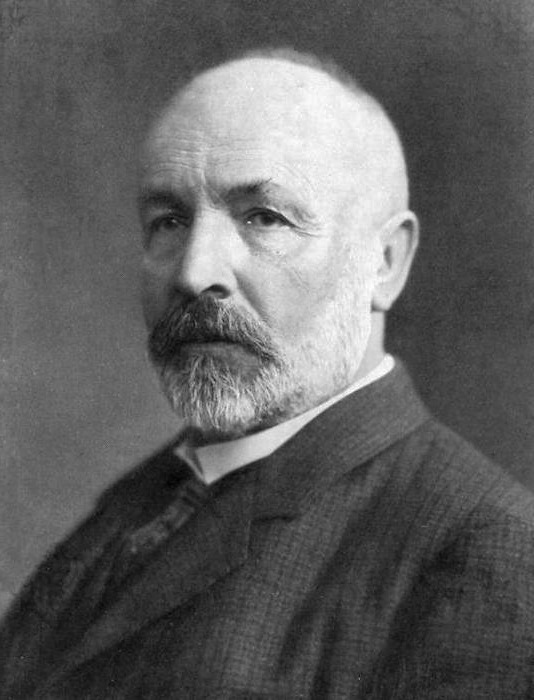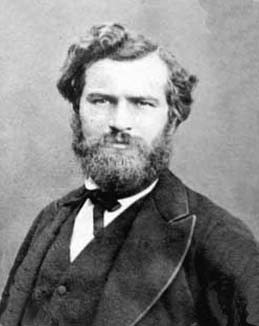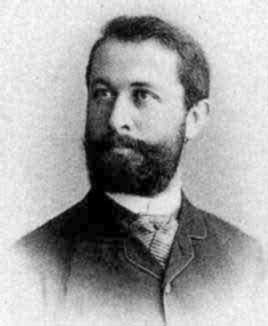- About MAA
- Membership
- MAA Publications
- Periodicals
- Blogs
- MAA Book Series
- MAA Press (an imprint of the AMS)
- MAA Notes
- MAA Reviews
- Mathematical Communication
- Information for Libraries
- Author Resources
- Advertise with MAA
- Meetings
- Competitions
- Programs
- Communities
- MAA Sections
- SIGMAA
- MAA Connect
- Students
- MAA Awards
- Awards Booklets
- Writing Awards
- Teaching Awards
- Service Awards
- Research Awards
- Lecture Awards
- Putnam Competition Individual and Team Winners
- D. E. Shaw Group AMC 8 Awards & Certificates
- Maryam Mirzakhani AMC 10 A Awards & Certificates
- Two Sigma AMC 10 B Awards & Certificates
- Jane Street AMC 12 A Awards & Certificates
- Akamai AMC 12 B Awards & Certificates
- High School Teachers
- News
You are here
Connecting Connectedness: A Mini-Primary Source Project for Topology Students
One of the main obstacles for students seeking to understand higher mathematics is the need to grasp a definition. As professional mathematicians, we know that definitions do not fall from the sky, but are instead arrived at through careful and painstaking work. When all is said and done, a good definition is pithy and precise, having been carefully molded with all the right nuances and wording to include the cases we want and to exclude pathologies.
It would seem, however, that this must be news to our students, as the learning of mathematics often begins with a definition rather than ending with it. One of the first places that this traditional pedagogy can begin to cause serious problems for the student is in a first course in topology. A topological space is already a fairly abstract concept, and the properties of topological spaces that one might be interested in studying are even more abstract.
One way to remedy this problem is to trace the evolution of a definition through its historical developments. Although not every definition in topology has a robust historical evolution, one definition with an especially fascinating history is that of connectedness. The concept of connectedness is also one of the more intuitive concepts that is encountered in topology, so that its evolution is quite remarkable to see. This mini-Primary Source Project (mini-PSP), Connecting Connectedness, is an all-too-brief sketch of that evolution.
|
Connectedness was originally defined by Georg Cantor as a condition that a set needed to satisfy in order to constitute a continuum [Cantor 1883]. Two things about Cantor’s definition are especially noteworthy. First, the definition presupposes the existence of a metric. Second, it applies only to closed and bounded sets. In particular, it made no sense for Cantor to ask if the punctured interval \( \, [0,1]-\{{1/2}\}\) was connected. This example becomes a running theme throughout the project, with the question of whether a particular definition can determine that this set is not connected (under the usual topology in \({ R}\), of course) serving as one criterion by which we might judge whether or not we have arrived at a fully satisfactory definition. |
 |
Georg Cantor |
| Camille Jordan (1838–1922). Wikimedia Commons. |
 |
The mini-PSP then looks at the work of Camille Jordan through excerpts from his well-known textbook Cours d’analyse [Jordan 1909]. While Jordan made several contributions to the evolving understanding of the concept of connectedness, the project itself focuses on a specific conceptual distinction that he identified in relation to the concept. Whereas Cantor defined a set to be connected if it satisfied a certain condition, Jordan defined a set to be separated if it satisfied a different condition, and then showed that a set is connected (in Cantor’s sense) if and only if there does not exist a separation. Even though Jordan did not give a new definition of connectedness, his viewpoint of separation as a property of connected sets is the one that we use today. |
|
|
The project’s next primary source comes from [Schoenflies 1904], a work by mathematician Arthur Moritz Schoenflies. Schoenflies had the insight that the concept of distance is not needed to define connectedness. By abstracting away the distance, he then defined the concept in purely point set terms. This was done, in part, to prove that connectedness is a topological invariant (an aspect of Schoenflies’ work that is not covered in the project). |  |
Arthur Schoenflies (1853–1928). |
Finally, the project culminates with the work [Lennes 1911] by a Norwegian mathematician who spent his career at Montana State University, Nels Lennes (1874–1951). Lennes was attempting to prove the Jordan Curve Theorem and, in the process, gave the definition of connectedness that we use to this day. Rather than beginning their study of connectedness with the finalized form of the definition, students thus end their project work with that definition. We believe this pedagogy serves our primary goal of building more insight and intuition into the abstract notion of connectedness, as well as our secondary goal of offering students a glimpse into the rich and intriguing history of mathematics.
The complete project Connecting Connectedness (pdf) is ready for student use, and the LaTeX source code is available from the author by request. A set of instructor notes that explain the purpose of the project and guide the instructor through the goals of each of the individual sections is appended at the end of the student project.
This project is the third in A Series of Mini-projects from TRIUMPHS: TRansforming Instruction in Undergraduate Mathematics via Primary Historical Sources appearing in Convergence, for use in courses ranging from first year calculus to analysis, number theory to topology, and more. Links to other mini-PSPs in the series appear below. The full TRIUMPHS collection includes five additional mini-PSPs and two more extensive “full-length” PSPs for use in a topology course, with one of these full PSPs telling the story of the evolution of “connectedness” in greater detail.
Acknowledgments
The development of the student project Connecting Connectedness has been partially supported by the TRansforming Instruction in Undergraduate Mathematics via Primary Historical Sources (TRIUMPHS) project with funding from the National Science Foundation’s Improving Undergraduate STEM Education Program under Grants No. 1523494, 1523561, 1523747, 1523753, 1523898, 1524065, and 1524098. Any opinions, findings, and conclusions or recommendations expressed in this project are those of the author and do not necessarily reflect the views of the National Science Foundation.
References
Cantor, George. 1883. Uber unendliche, lineare Punktmannigfaltigkeiten 5. Mathematische Annalen 21:545–586.
Jordan, Camille. 1893. Cours d'analyse, Volume 1. Paris: Gauthier-Villars.
Lennes, N. J. 1911. Curves in Non-Metrical Analysis Situs with an Application in the Calculus of Variations. American Journal of Mathematics 33(1–4):287–326.
Schoenflies, Arthur. 1904. Beitrage zur Theorie der Punktmengen I. Mathematische Annalen 58:195–238.
Nicholas A. Scoville (Ursinus College), "Connecting Connectedness: A Mini-Primary Source Project for Topology Students," Convergence (October 2017)




